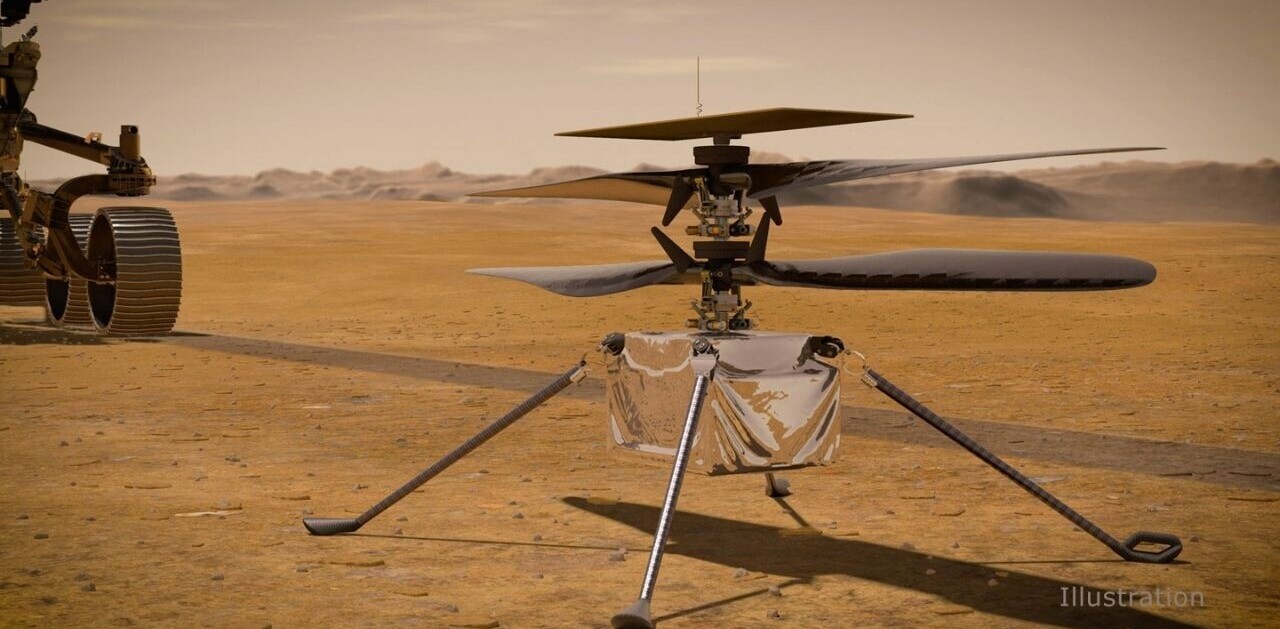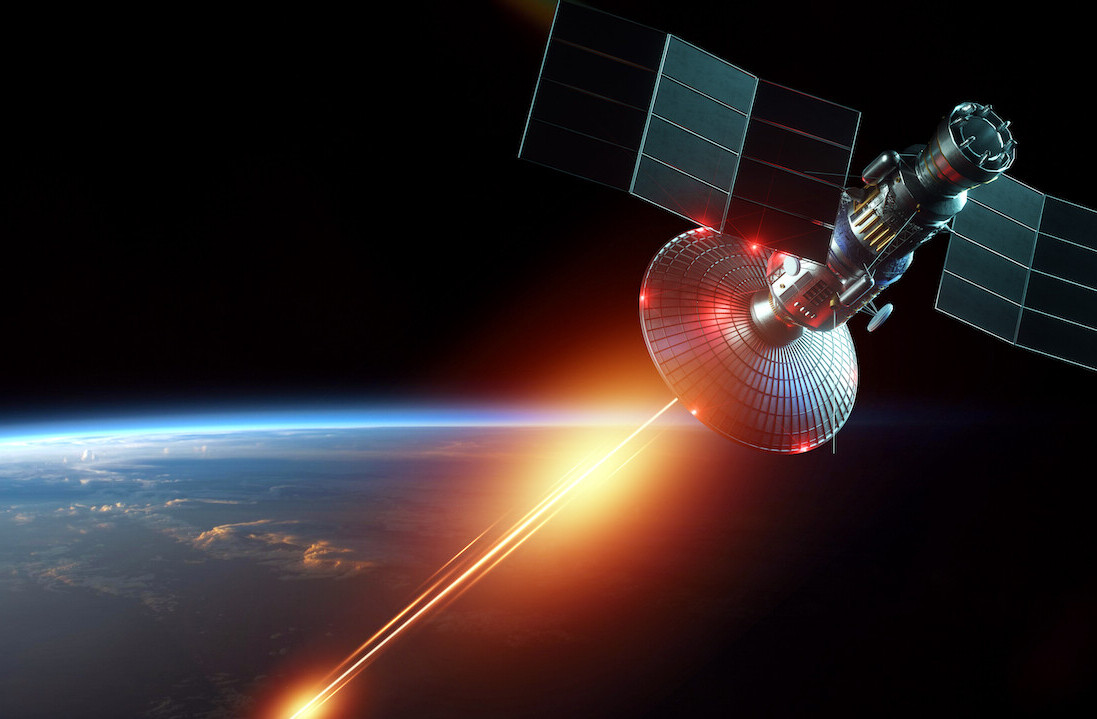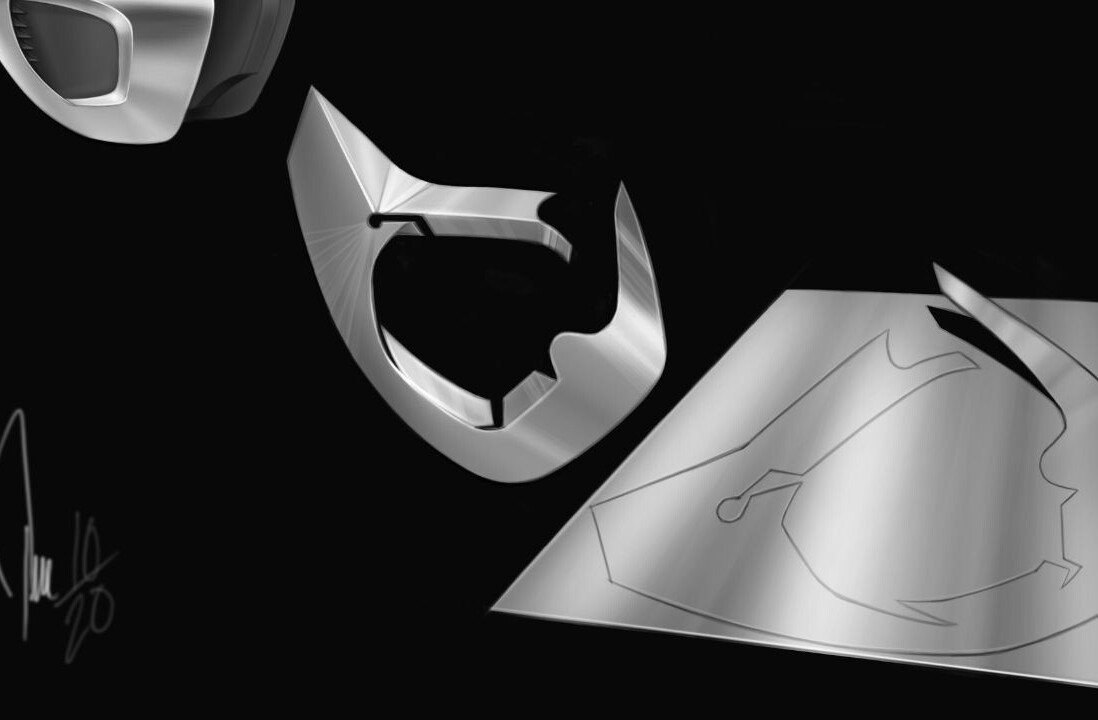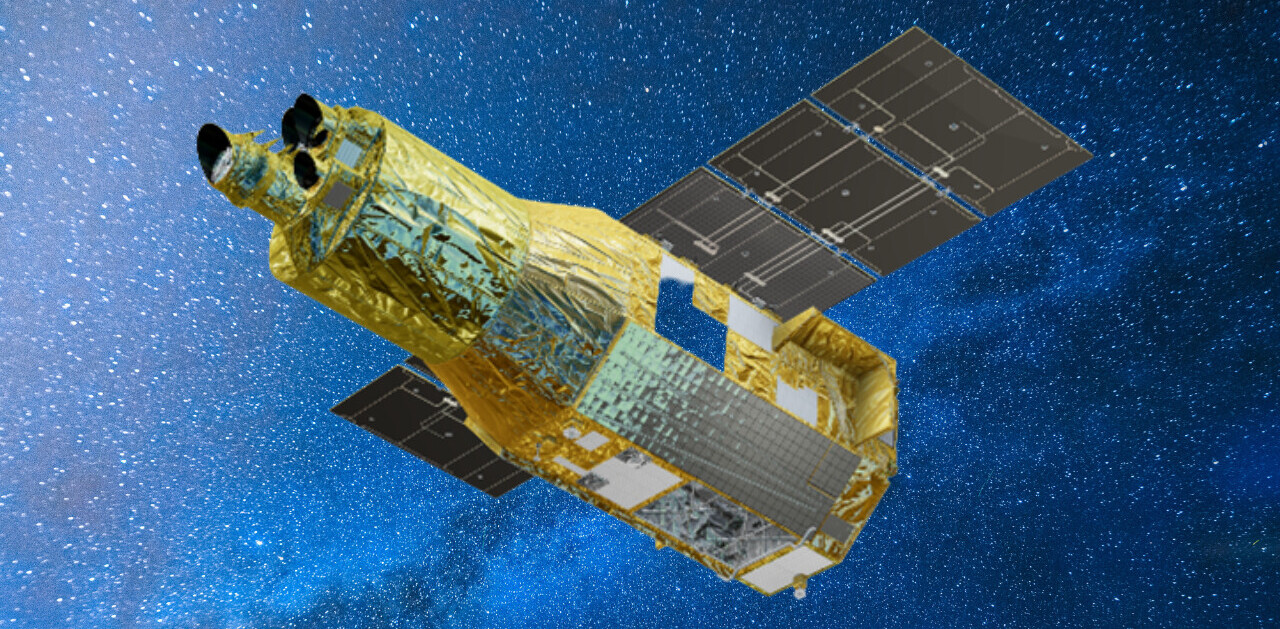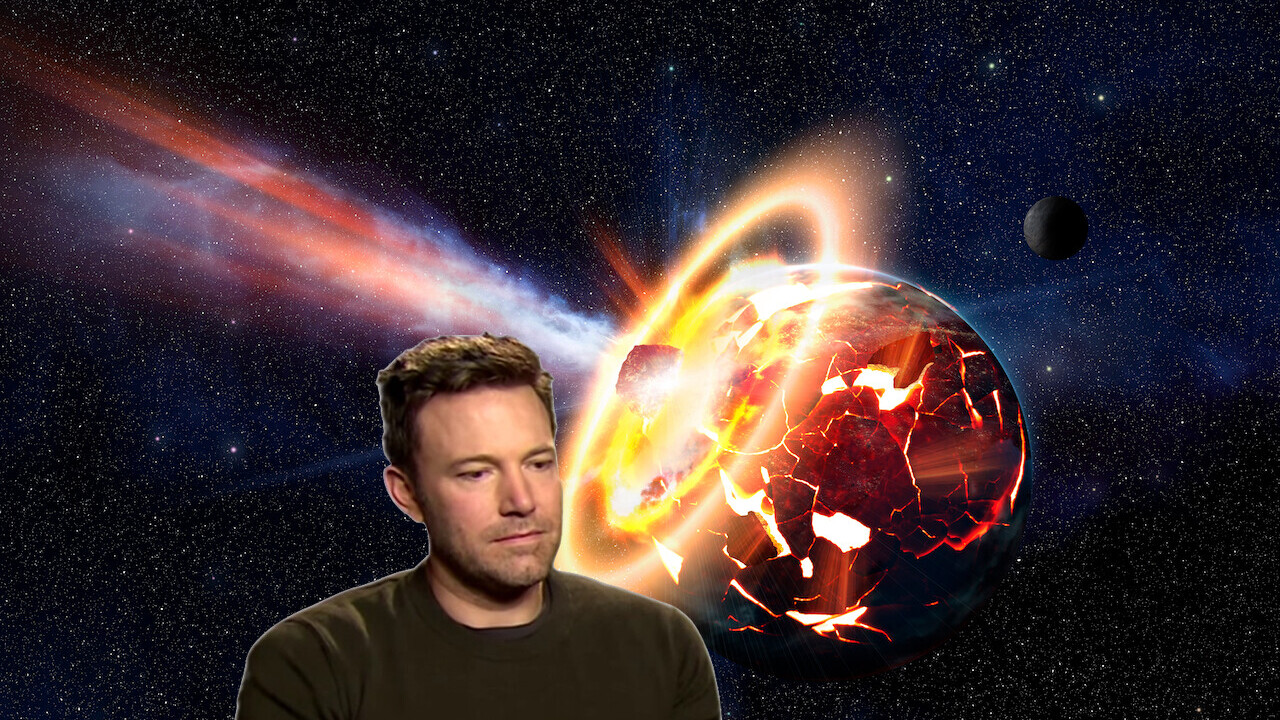
Asteroids are remnants of the early Solar System, with the potential to reveal secrets of our planet’s origins. But they could also bring an end to life on Earth. Now two missions, Lucy and DART (Double Asteroid Redirection Test) will provide further insights into both of these features – with DART even attempting to redirect the orbit of a moon around an asteroid.
Space rocks are generally considered to be asteroids if they are larger than approximately 1km in size and made of “non-volatile” materials – chemicals that can be easily vaporized. Carbon monoxide, for example, is volatile as it vaporizes at a temperature of -191°C. But iron, with a vaporization point of 2,862°C is non-volatile.
This is somewhat different to comets. Asteroids are found more commonly in the inner Solar System, whereas comets with their volatile-rich composition tend to lurk in the outer part, far from the heat of the Sun. Some 500,000 asteroids have been cataloged to date, and many have small moons of their own.

Asteroids are thought to be the remnants of planetesimals – precursors of the planets in the early Solar System, which coalesced under gravity to form the familiar worlds we know today. Asteroids somehow escaped this process, preserving something of the conditions of our early Solar System, from a time before even the planets had formed. This epoch is quite mysterious. How tiny dust particles, which constituted the bulk of solid material at the time, were able to clump together and form larger objects like asteroids, given that they lack significant gravitational fields of their own, is still being investigated.
The most well-known of the asteroids are those which reside in the main belt, a million-strong swarm orbiting the Sun between Mars and Jupiter. This sounds like a lot, but space is vast and the distances between one asteroid and a neighbour are typically millions of kilometres. Thus the odds of successfully navigating an asteroid field, at least in our Solar System, are significantly better than 3,720 to 1.
The US$980 million (£714 million) Lucy spacecraft – launched on October 16 – will fly through three asteroid fields over the course of its 12-year mission. It is named Lucy after the famous hominin fossil, because it is hoped it could be similarly revolutionary for our knowledge of the Solar System’s origins. Lucy will fly first through the main belt, then travel outwards to visit two other less familiar asteroid fields – the Jupiter Trojans.
Trojan asteroids orbit the Sun at the “Lagrange points”. These are positions in space where the gravitational pull of the Sun and a planet balance out such that an object located there will naturally remain in place, potentially for billions of years. There are five such points for all planets in the solar system and they are numbered L1-L5 (see image below). The Jupiter Trojans, clustered at L4 and L5, are two enormous and unexplored asteroid fields, which between them harbour at least as many asteroids as the main belt.
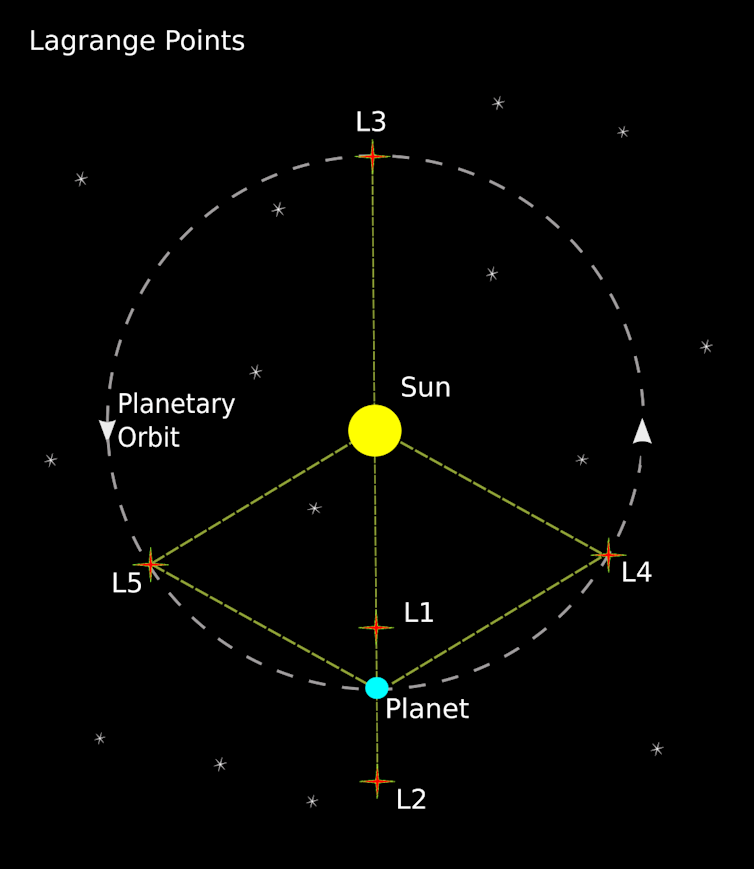
Lucy will first venture to the L4 Jupiter Trojans, which it will reach in 2027. It will then fly back towards Earth, using our planet’s gravity to slingshot it back out towards the L5 Jupiter Trojans, which it will reach in 2033. This remarkable flight path will be accomplished with solar-electric propulsion.
The spacecraft carries a suite of instruments including sophisticated cameras and spectrometers to map the asteroids and discern their composition. It is expected that the chemical composition of the Jupiter Trojans will be somewhat different from the main belt asteroids, containing a higher concentration of volatile material, blurring the distinction between asteroids and comets. Indeed, one Jupiter Trojan was recently found to have a comet-like tail.
Asteroid strikes
Not all asteroids are confined to a belt. Some wander throughout the Solar System on orbits which can bring them into close proximity with planets like Earth. The impact hazard of asteroids is relatively well-publicized, particularly after the Chelyabinsk meteor which exploded over a Russian town in 2013, injuring over 1,000 people and causing extensive damage.
At some point in late November, Nasa will attempt to launch DART. This spacecraft will attempt to intercept 65803 Didymos, a near-Earth asteroid with a small moon of its own, called Dimorphos. The approximately 170 metre sized moon will be struck by the 500kg DART spacecraft with an impact velocity of 6.6 kilometres per second. The objective is to observe a change in orbital motion of Dimorphos about Didymos as a result of the collision.
This will be accomplished by a follow up mission launched by ESA, called Hera, which will reach Didymos in 2026 and perform a detailed survey of Dimorphos’ orbit. By measuring the change in orbit of the little moon, scientists and engineers will be able to better calculate how much energy is required to alter the orbit of a hypothetical future threatening asteroid. It must be stressed that, currently, there are no known future asteroid-Earth collisions, but clearly it is best to prepare for such an eventuality.
There are even more asteroid missions in the near future. In August 2022, Nasa will launch Psyche to visit its namesake asteroid, 16 Psyche, which orbits in the main belt. This peculiar world is over 200km across and contains a lot of metal. So much in fact that it is believed to be the exposed core of a once growing planet in the early Solar System, which suffered a catastrophic impact at some point in the distant past.
This collision sheared off the outer layers of the fledgling planet, leaving the exposed metal-rich core behind. If this theory turns out to be correct, then it will be the first time that scientists have had a chance to directly observe a planetary core.
This slew of upcoming missions, and many recent previous ones, represent something of a golden era in asteroid research. Asteroids still have many stories to tell, hold vast economic potential as mining resources, and pose an obvious danger to civilization on Earth.![]()
This article by Gareth Dorrian, Post Doctoral Research Fellow in Space Science, University of Birmingham is republished from The Conversation under a Creative Commons license. Read the original article.
Get the TNW newsletter
Get the most important tech news in your inbox each week.
